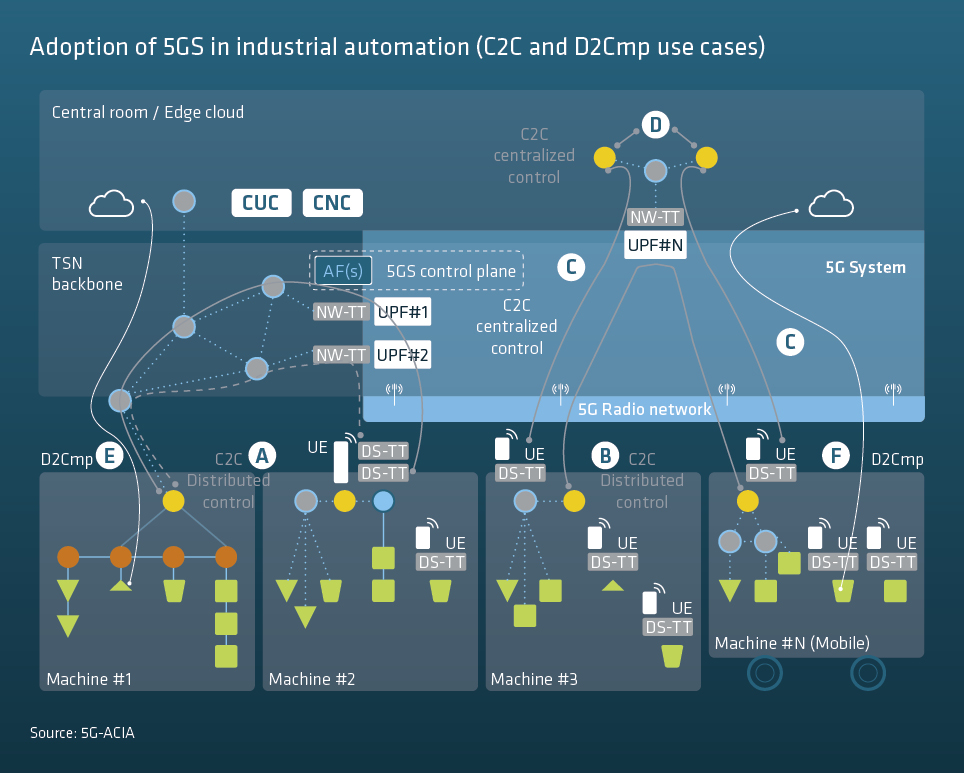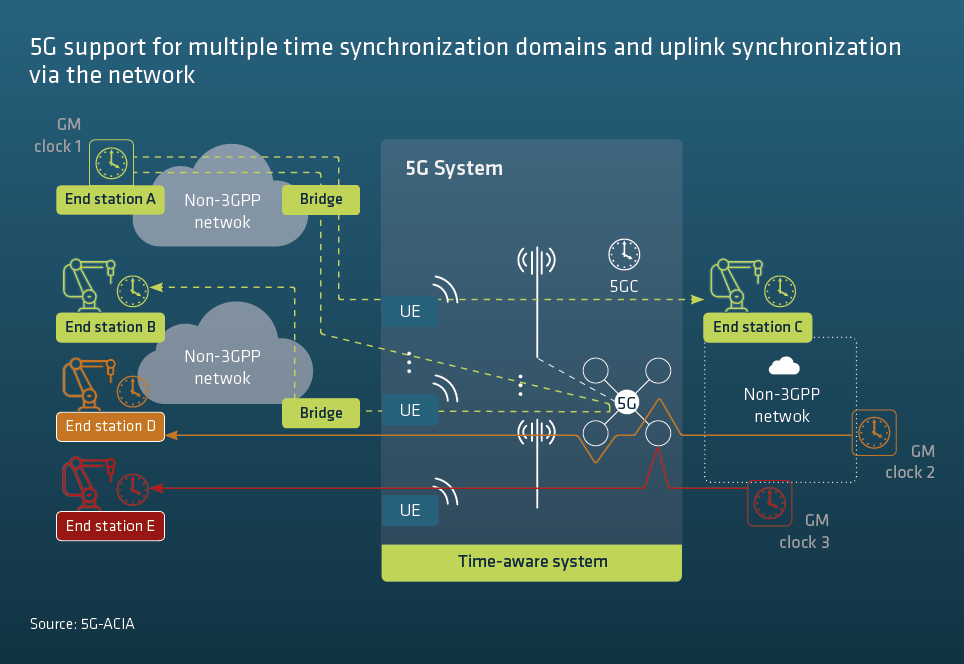Fifth-generation wireless communications (5G) and time-sensitive networking (TSN) technologies are key to future industrial communications: 5G for wireless connectivity and TSN for wired connectivity. Both technologies have been designed to provide converged communication for a wide range of services on a common network infrastructure, including for time-sensitive applications that require deterministic, reliable and low-latency communications. Significant benefits can be achieved for corresponding industrial use cases by introducing TSN and 5G wireless communication, e. g., increased flexibility in the deployment of industrial equipment and the network.
This paper identifies the requirements of these applications, and describes the functional capabilities needed to seamlessly integrate 5G with TSN. The paper also provides brief overviews of the 5G and TSN functions needed to support time-sensitive applications. 3GPP specified 5G support for TSN in Release 16, with further enhancements in Release 17, to allow seamless integration of a 5G system (5GS) with TSN networks. In integrated networks of this type, a 5G system will simply be perceived as IEEE-compliant virtual Ethernet- TSN bridges.
This white paper describes and examines integration of 5G with TSN for typical industrial use cases, namely controller-to-controller, controller-to-device and device-to-compute communications. The paper shows that 5G, as specified in Release 16 and 17, provides all functionality needed for integration with TSN for industrial automation.
IEEE TSN standardization is evolving, and specification of a TSN profile for industrial automation is currently under development. It is important that the 5G standard remains aligned with this evolution of TSN.
5G interworking with TSN networks provides wireless support for Ethernet-TSN services. The 5G-TSN integration brings significant benefits for industrial automation use cases.
The figure shows an example of how 5G system is integrated with TSN in a factory, where 5G provides communication services for various industrial use cases (e.g. controller-to-controller).

A 5GS can receive TSN traffic QoS information from the CNC via the interface standardized in IEEE 802.1Q, and then map TSN traffic to 5G QoS flow in a corresponding PDU session, together with the appropriate QoS configuration.

5G acts as a IEEE 802.1AS compatible time-aware system to support TSN time synchronization. A 5GS can support synchronization for up to 128 separate gPTP time domains simultaneously.

You are currently viewing a placeholder content from YouTube. To access the actual content, click the button below. Please note that doing so will share data with third-party providers.
More InformationYou are currently viewing a placeholder content from YouTube. To access the actual content, click the button below. Please note that doing so will share data with third-party providers.
More InformationThe white paper shows that significant benefits can be achieved for industrial use cases with the introduction of TSN and 5G wireless communication, e.g., due to increased flexibility in the deployment of industrial equipment and the network. This requires 5G to provide robust support for Ethernet-TSN communication services and interworking with wired TSN networks. The standardized capabilities of 5G required to support TSN services are described in section 7, based on 3GPP Release 16 and the enhancements of Release 17. An integrated 5G and TSN network design is presented in section 8. The integration of 5G and TSN connectivity is investigated for various use case categories, i.e., controller-to-controller, controller-to-device and device-to-compute communication. The main finding of this paper is that 5G has been standardized with all the necessary support to seamlessly integrate with industrial TSN networks. However, the future evolution of TSN will have to be matched by 5G enhancements in coming releases. In particular, the 5G standard must remain aligned with the development of the industrial automation profile for TSN, which is taking place within the scope of IEC/IEEE 60802, to ensure adequate support for interworking in seamlessly integrated 5G-TSN networks of the future.

Do you want to learn more about this future-oriented topic? Please download or share the 5G-ACIA white paper as a PDF file.
You are currently viewing a placeholder content from YouTube. To access the actual content, click the button below. Please note that doing so will share data with third-party providers.
More InformationYou need to load content from reCAPTCHA to submit the form. Please note that doing so will share data with third-party providers.
More Information